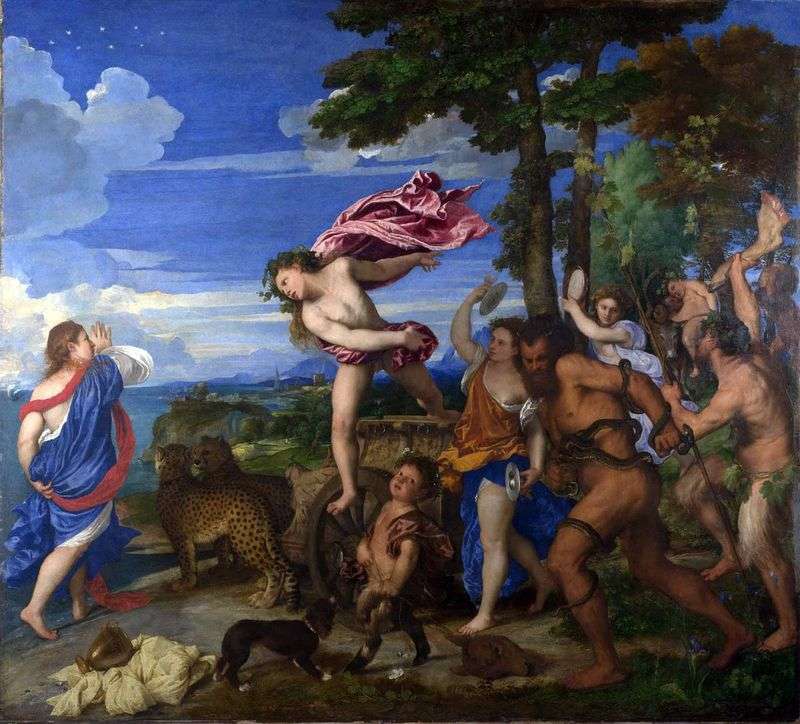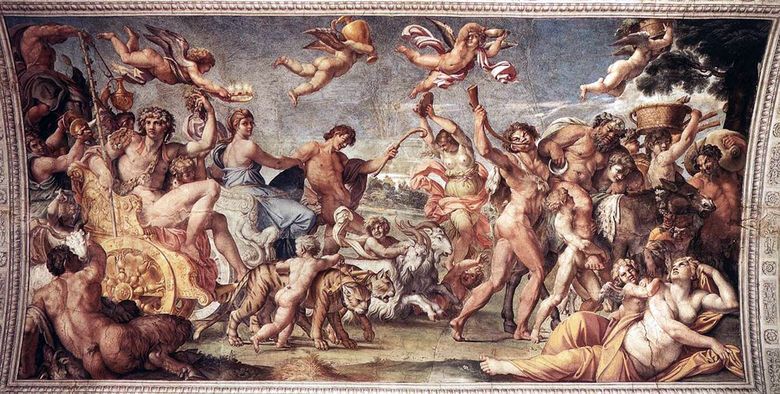
“The Triumph of Bacchus and Ariadne” – the central ceiling panel of the famous Farnese Gallery. Here is a triumphal wedding procession of Bacchus and Ariadne. Like other frescoes of the Farnese Gallery, this work is devoted to the theme of sensual love. There are two versions of the myth, dedicated to the marriage of Ariadne and Bacchus.
According to the first, Theseus, who loved him Ariadne helped to get out of the labyrinth of the Minotaur, promised to marry her and persuaded her to flee with him, but then left her sleeping on the island of Naxos. Here, Ariadne allegedly found Bacchus, who at first sight fell in love with her. Another version of the myth says that Theseus did not abandon Ariadne, but Bacchus, having inflamed her with passion, himself took it from Theseus and carried to the island of Lemnos, where the wedding was celebrated, so expressively and painstakingly portrayed by Annibale Carracci.
The wedding procession stretches along the arch of the gallery, forming a rhythmic pattern. It is headed by a drunk Silenus. A beautiful young Bacchus is sitting on a chariot drawn by leopards, while Ariadne is being driven by white fine-wool goats. In front of the chariots, the spouses flee, whirling in violent dance, satyrs and maenads.
 Bacchus and Ariadne (Bacchanalia) by Nicolas Poussin
Bacchus and Ariadne (Bacchanalia) by Nicolas Poussin In love with Polyphemus by Annibale Carracci
In love with Polyphemus by Annibale Carracci Etude to the Triumph of Bacchus and Ariadne by Annibale Carracci
Etude to the Triumph of Bacchus and Ariadne by Annibale Carracci Bacchus and Ariadne by Titian Vecellio
Bacchus and Ariadne by Titian Vecellio Bacchus and Ariadne by Titian
Bacchus and Ariadne by Titian Venus, Adonis and Cupid by Annibale Carracci
Venus, Adonis and Cupid by Annibale Carracci Le triomphe de Bacchus et Ariane – Annibale Carracci
Le triomphe de Bacchus et Ariane – Annibale Carracci Wrath of Polyphemus by Annibale Carracci
Wrath of Polyphemus by Annibale Carracci